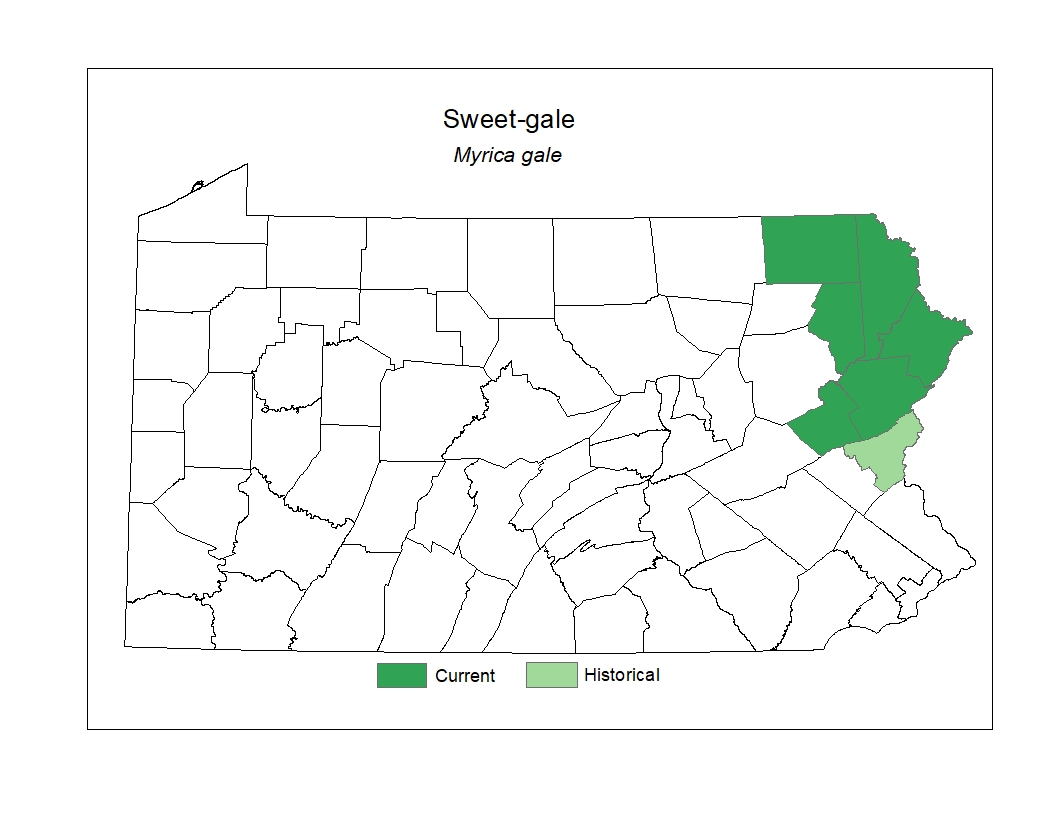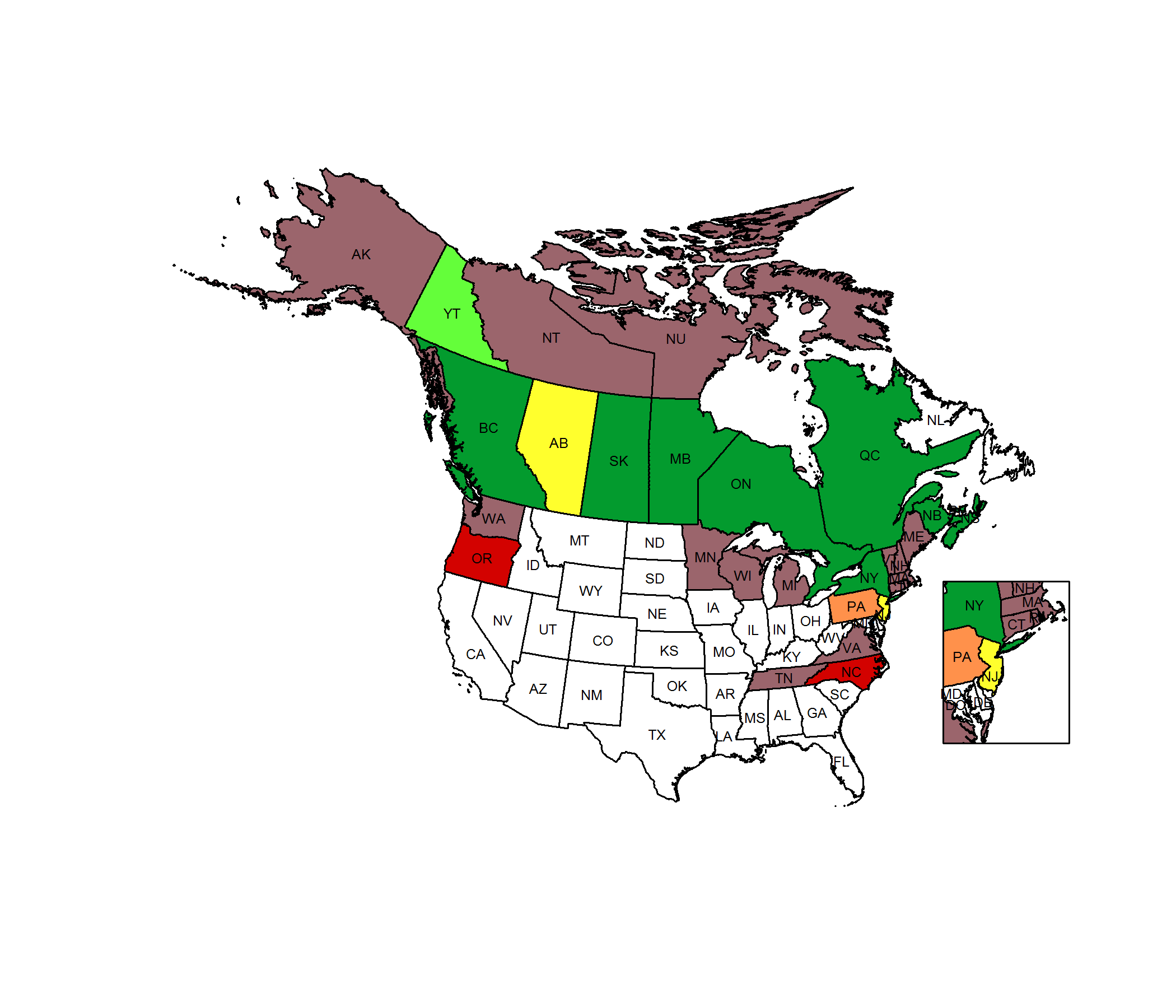 Species Factsheets
Species Factsheets
Myrica gale
Sweet-gale
State Status: Pennsylvania Threatened (PT)
PBS Status: Pennsylvania Threatened (PT)
Federal Status:
Global Rank: G5
![]() rank interpretation
rank interpretation
State Rank: S2
Description
Sweet-gale is a deciduous shrub that may grow up to 1 m in height and emits a spicy fragrance if the branchlets are broken or the leaves are crushed. The branchlets may have enlarged flower buds near their tip, with the smaller leaf buds found farther down the branchlet. The leaves are alternately arranged, deciduous, thickish in texture, short-stalked, tend to be broadest at or near the tip, where several teeth are present on the margins, gradually tapering (and lacking teeth) to a narrower wedge-like base. The lower side (and sometimes the upper) of the leaves have scattered golden resin droplets. The brownish or greenish flowers, which appear in May before the leaves expand, are rather small and inconspicuous, being aggregated into compact male and female clusters, which occur on separate plants. The fruit is a dry nut about 2-3 mm in length that also has resin droplets on its surface.
Rank Justification
Imperiled in the nation or state because of rarity due to very restricted range, very few populations (often 20 or fewer), steep declines, or other factors making it very vulnerable to extirpation from the nation or state.
Habitat
The species grows in boggy wetlands and along shorelines of lakes and streams.
Survey Dates
Flowers in May before leaves emerge
Distribution
Sweet-gale has a transcontinental range across the cooler regions of North America. In Pennsylvania, it represents a northerly species and has been documented historically in several northeastern counties.

Management
The viability of populations of Sweet-gale and its habitat may be enhanced by creating buffers and protecting the natural hydrology around wetlands.
Conservation Status Map

NatureServe. 2017. NatureServe Explorer: An online encyclopedia of life [web application]. Version 7.1. NatureServe, Arlington, Virginia. Available https://explorer.natureserve.org.
- NatureServe. 2018. NatureServe Explorer: An online encyclopedia of life [web application]. Version 7.1. NatureServe, Arlington, Virginia. Available at https://www.natureserve.org/explorer
- Pennsylvania Natural Heritage Program. 2018.
- Rhoads, A.F. and W.M. Klein, Jr. 1993. The Vascular Flora of Pennsylvania. American Philosophical Society, Philadelphia, Pennsylvania. Rhoads, A.F. and T.A. Block.
- 2007. The Plants of Pennsylvania: An Illustrated Manual. 2nd edition. University of Pennsylvania Press, Philadelphia, Pennsylvania.







